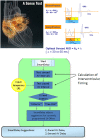Clinical Relevance Of Systematic CRT Device Optimization
- PMID: 27957096
- PMCID: PMC5135253
- DOI: 10.4022/jafib.1077
Clinical Relevance Of Systematic CRT Device Optimization
Abstract
Cardiac Resynchronization Therapy (CRT) is known as a highly effective therapy in advanced heart failure patients with cardiac dyssynchrony. However, still one third of patients do not respond (or sub-optimally respond) to CRT. Among the many contributors for the high rate of non-responders, the lack of procedures dedicated to CRT device settings optimization (parameters to regulate AV synchrony and VV synchrony) is known as one of the most frequent. The most recent HF/CRT Guidelines do not recommend to carry-out optimization procedures in every CRT patient; they simply state those procedures "could be useful in selected patients", even though their role in improving response has not been proven. Echocardiography techniques still remain the gold-standard reference method to the purpose of CRT settings optimization. However, due to its severe limitations in the routine of CRT patients management (time and resource consuming, scarce reproducibility, inter and intra-operator dependency), echocardiography optimization is widely under-utilized in the real-world of CRT follow-up visits. As a consequence, device-based techniques have been developed to by-pass the need for repeated echo examinations to optimize CRT settings. In this report the available device-based optimization techniques onboard on CRT devices are shortly reviewed, with a specific focus on clinical outcomes observed in trials comparing these methods vs. clinical practice or echo-guided optimization methods. Particular emphasis is dedicated to hemodynamic methods and automaticity of optimization algorithms (making real the concept of "ambulatory CRT optimization"). In fact a hemodynamic-based approach combined with a concept of frequent re-optimization has been associated - although retrospectively - with a better clinical outcome on the long-term follow-up of CRT patients. Large randomized trials are ongoing to prospectively clarify the impact of automatic optimization procedures.
Figures






References
-
- Cazeau S, Ritter P, Bakdach S, Lazarus A, Limousin M, Henao L, Mundler O, Daubert J C, Mugica J. Four chamber pacing in dilated cardiomyopathy. Pacing Clin Electrophysiol. 1994 Nov;17 (11 Pt 2):1974–9. - PubMed
-
- Brignole Michele, Auricchio Angelo, Baron-Esquivias Gonzalo, Bordachar Pierre, Boriani Giuseppe, Breithardt Ole-A, Cleland John, Deharo Jean-Claude, Delgado Victoria, Elliott Perry M, Gorenek Bulent, Israel Carsten W, Leclercq Christophe, Linde Cecilia, Mont Lluís, Padeletti Luigi, Sutton Richard, Vardas Panos E. 2013 ESC guidelines on cardiac pacing and cardiac resynchronization therapy: the task force on cardiac pacing and resynchronization therapy of the European Society of Cardiology (ESC). Developed in collaboration with the European Heart Rhythm Association (EHRA). Europace. 2013 Aug;15 (8):1070–118. - PubMed
-
- Daubert Jean-Claude, Saxon Leslie, Adamson Philip B, Auricchio Angelo, Berger Ronald D, Beshai John F, Breithard Ole, Brignole Michele, Cleland John, Delurgio David B, Dickstein Kenneth, Exner Derek V, Gold Michael, Grimm Richard A, Hayes David L, Israel Carsten, Leclercq Christophe, Linde Cecilia, Lindenfeld Joann, Merkely Bela, Mont Lluis, Murgatroyd Francis, Prinzen Frits, Saba Samir F, Shinbane Jerold S, Singh Jagmeet, Tang Anthony S, Vardas Panos E, Wilkoff Bruce L, Zamorano Jose Luis. 2012 EHRA/HRS expert consensus statement on cardiac resynchronization therapy in heart failure: implant and follow-up recommendations and management. Heart Rhythm. 2012 Sep;9 (9):1524–76. - PubMed
-
- Yu Cheuk-Man, Hayes David L. Cardiac resynchronization therapy: state of the art 2013. Eur. Heart J. 2013 May;34 (19):1396–403. - PubMed
-
- Mullens Wilfried, Grimm Richard A, Verga Tanya, Dresing Thomas, Starling Randall C, Wilkoff Bruce L, Tang W H Wilson. Insights from a cardiac resynchronization optimization clinic as part of a heart failure disease management program. J. Am. Coll. Cardiol. 2009 Mar 3;53 (9):765–73. - PubMed
Publication types
LinkOut - more resources
Full Text Sources
Research Materials
Miscellaneous
